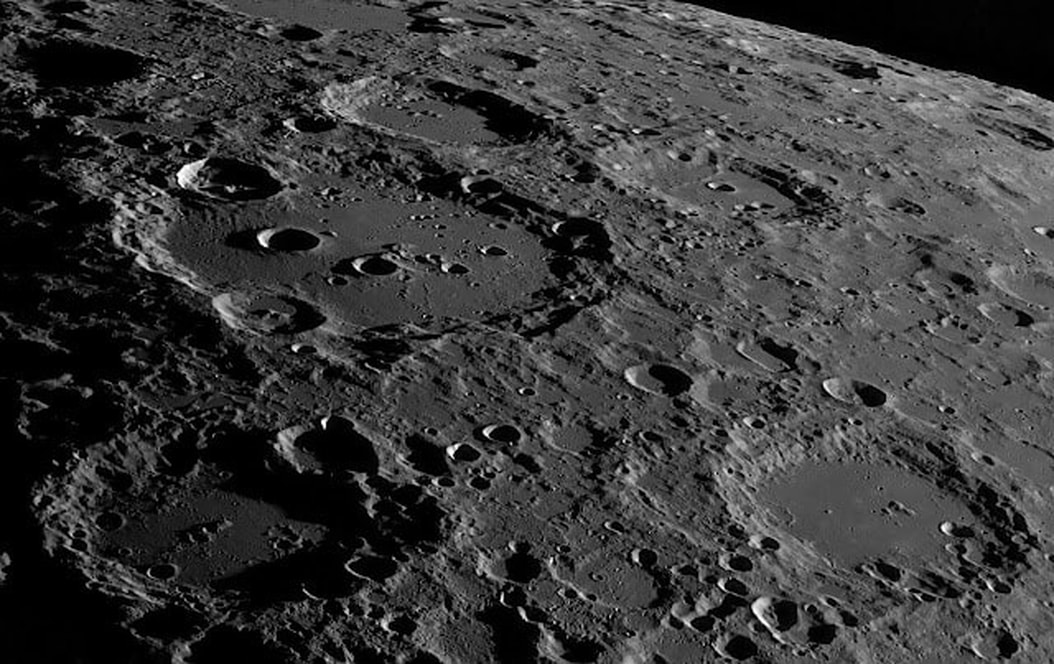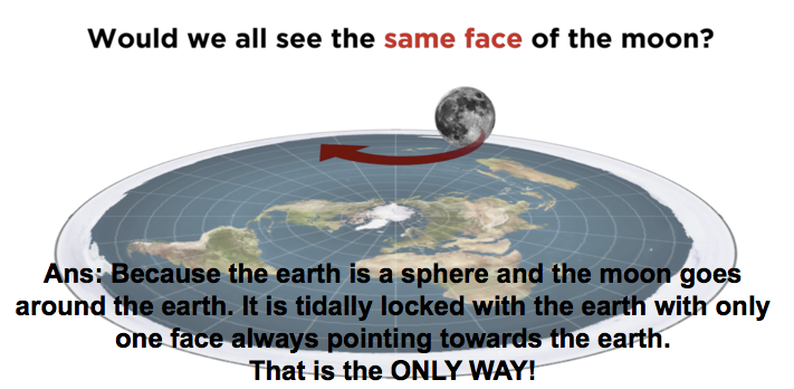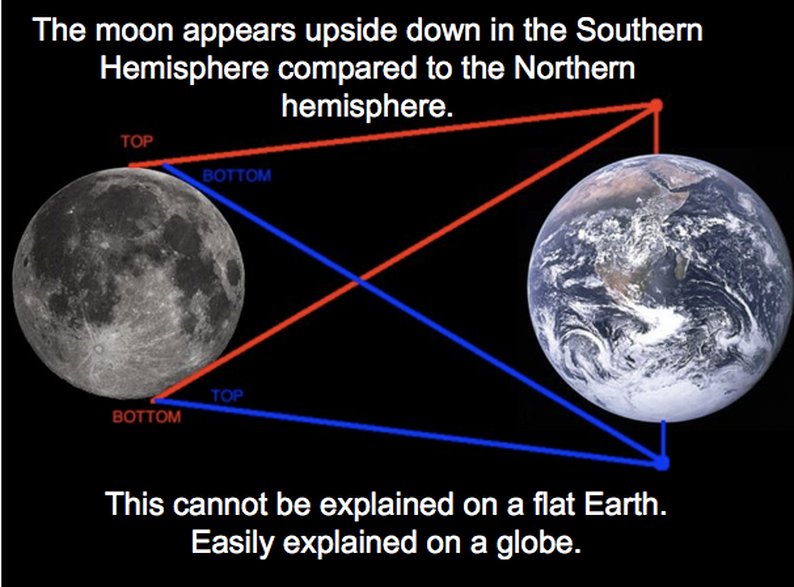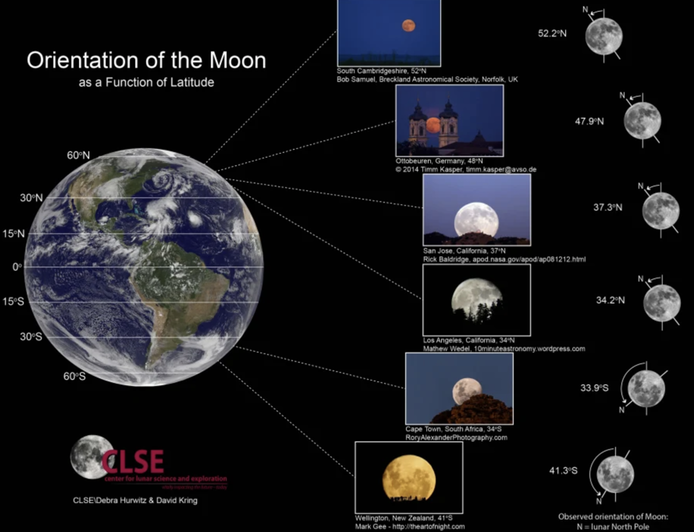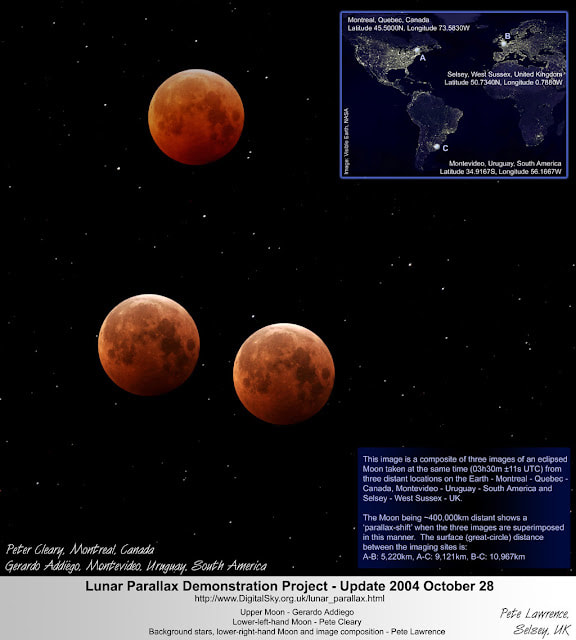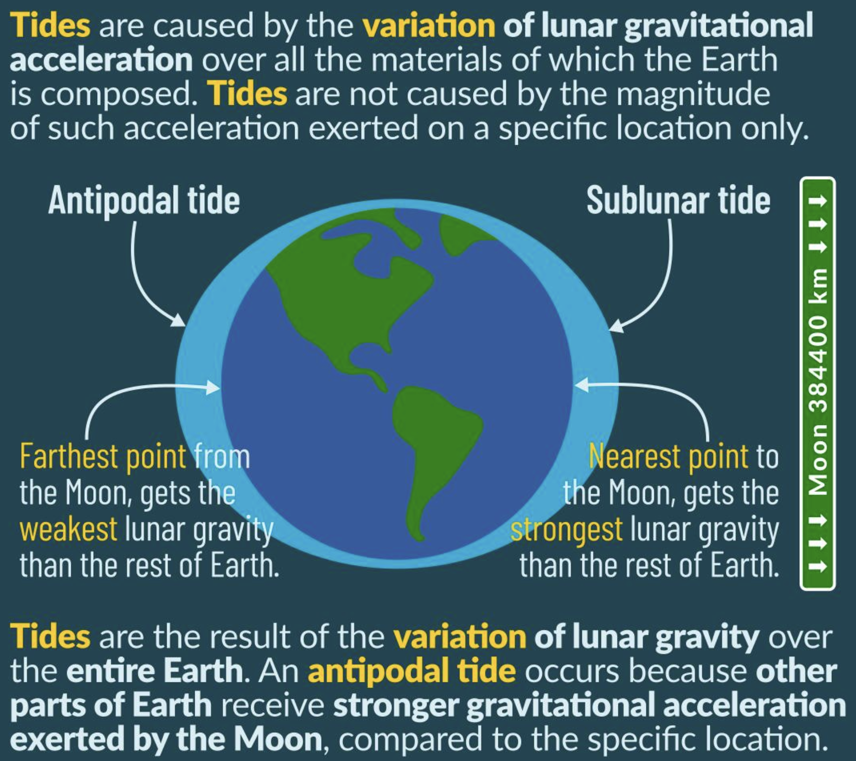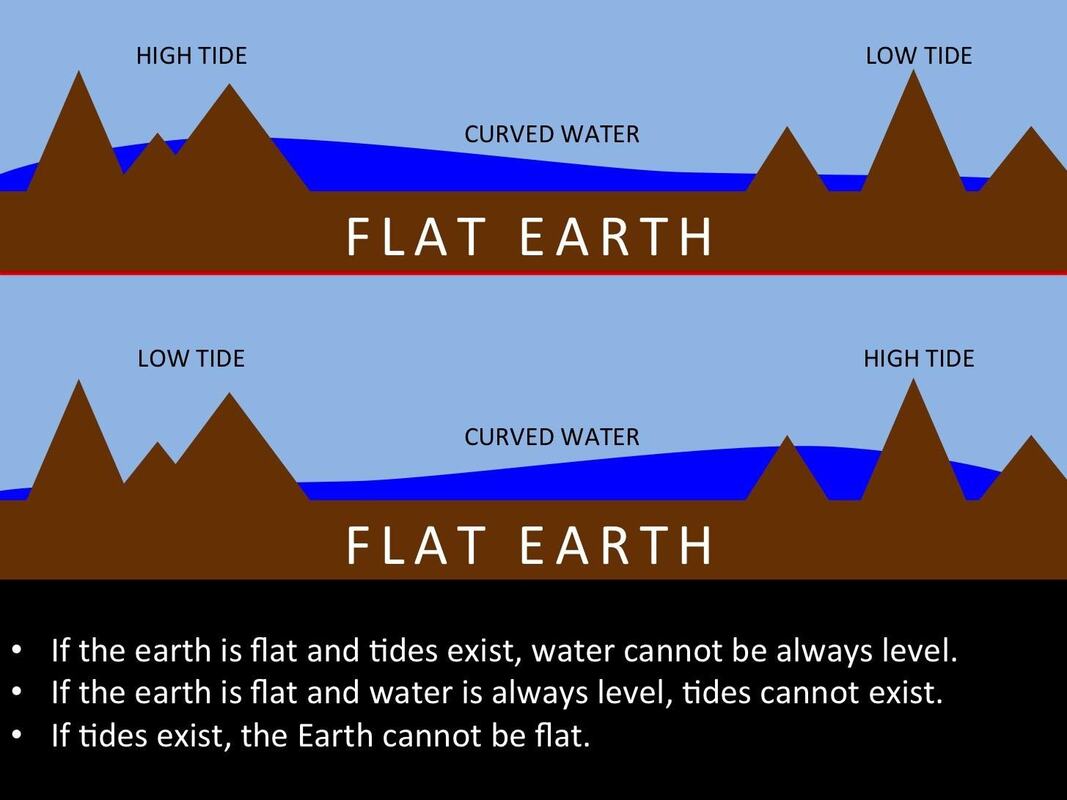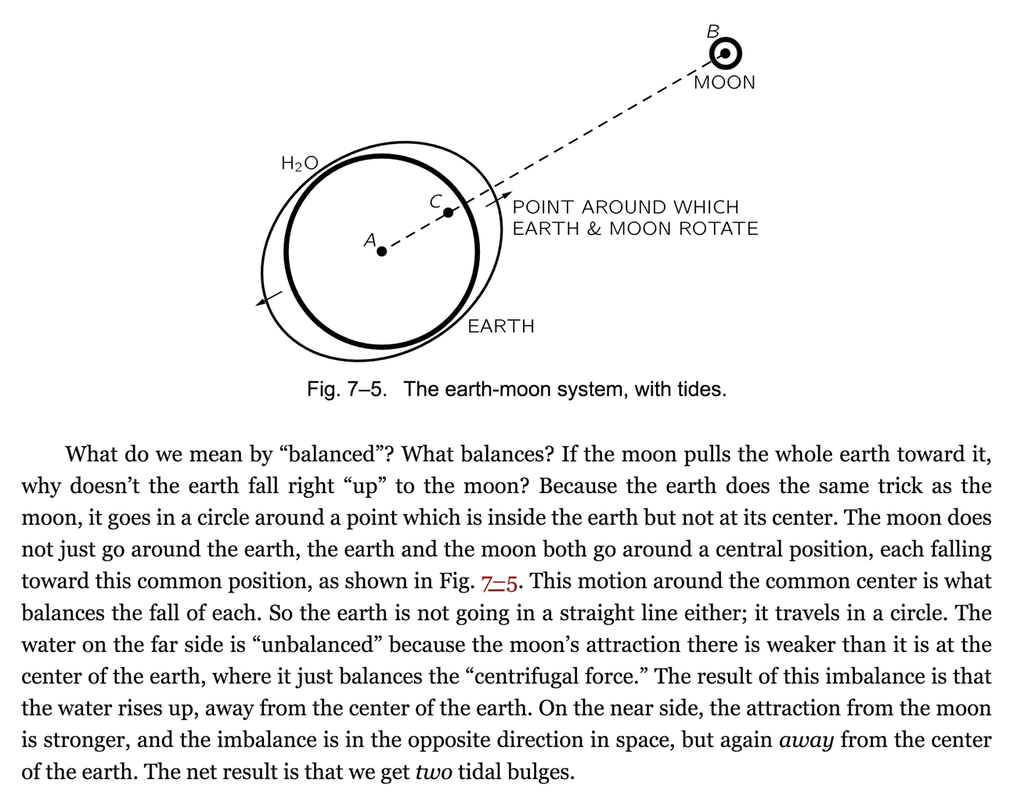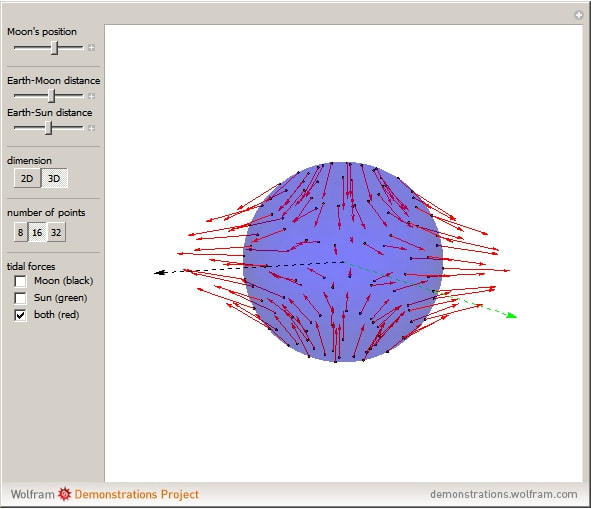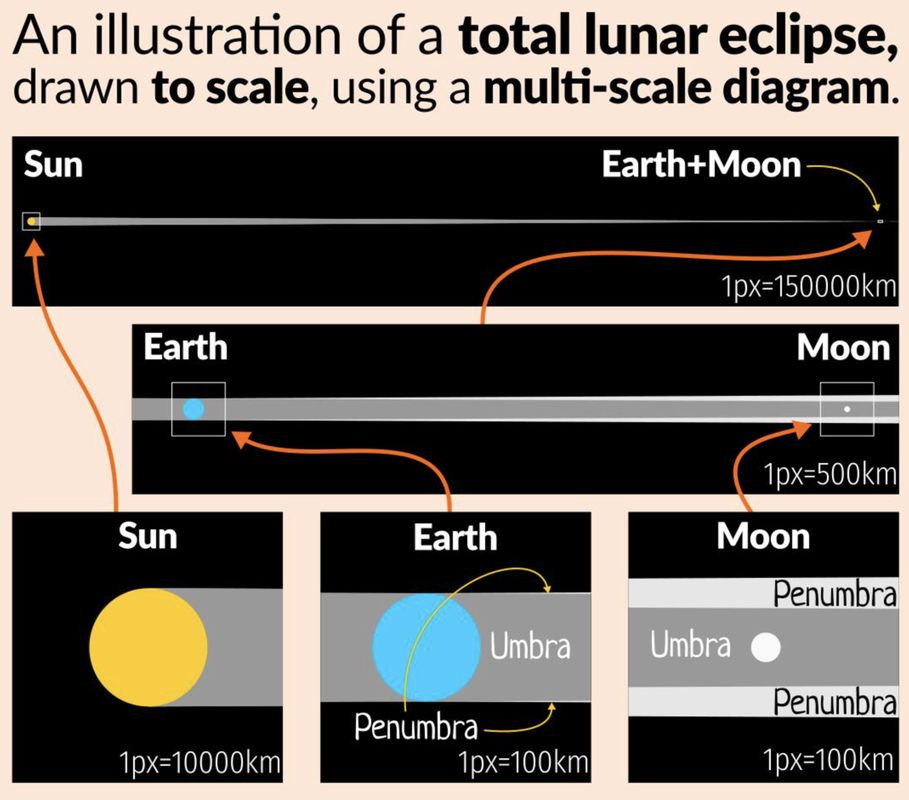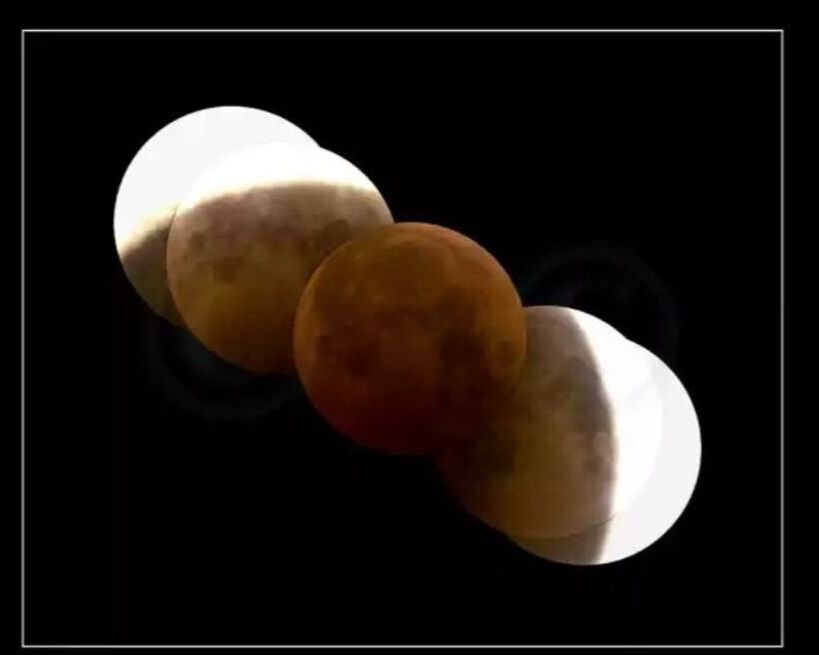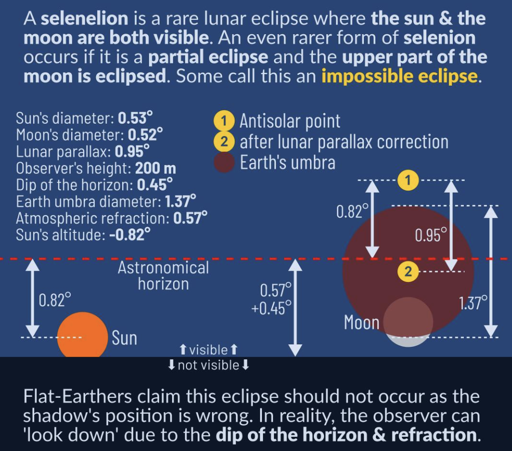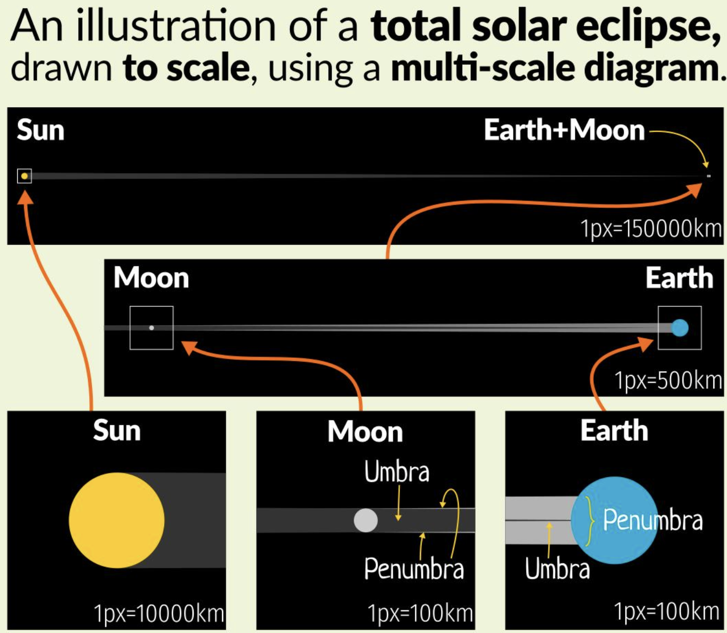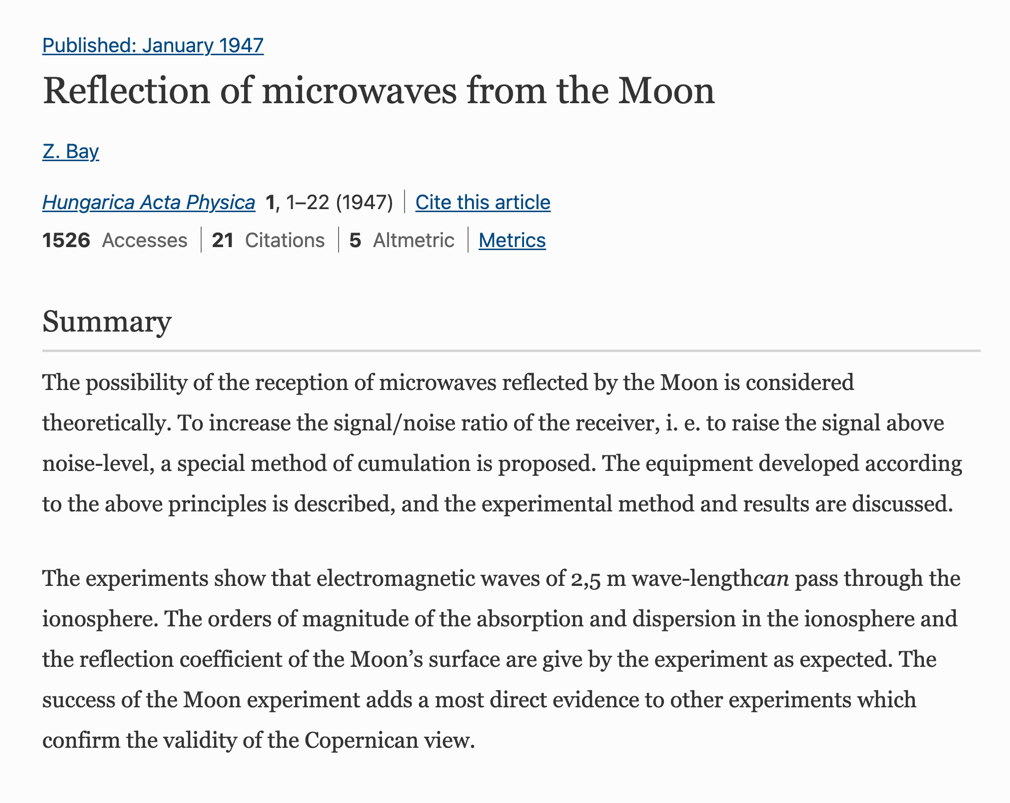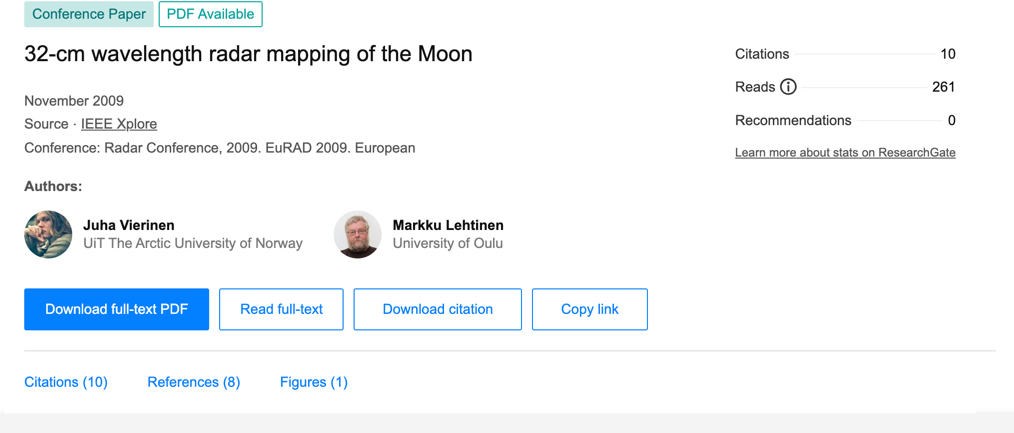Moon
Appearance of the Moon on the Different Locations on Earth
The Orientation of the Moon
Apparent Size of the Moon
Explains why we all see one side of the moon
Explains why we all see the same phase of the moon
Explains tidal locking
Explains lunar eclipses
Explains solar eclipses
Eclipse Prediction
Explains tides
Selenelion and Selenoin eclipse
Earthshine Proves the Moon Obscures the Sun During a Total Solar Eclipse
https://refutandotp.blogspot.com/
Luminosity of Moon
.002 Watts/M^2 Reaching earth (.25 lux)
384 million meters to the moon
multiply lux by .0079
.25 lux from moon = .002 Watts/m^2
4 quadrillion watts total
surface area of moon = 37.94 trillion square meters
Moon Luminosity 4 quadrillion watts total
~ 10 mW/cm^2 or ~ 100 W/m^2 (Moon Surface)
Appearance of the Moon on the Different Locations on Earth
The Orientation of the Moon
Apparent Size of the Moon
Explains why we all see one side of the moon
Explains why we all see the same phase of the moon
Explains tidal locking
Explains lunar eclipses
Explains solar eclipses
Eclipse Prediction
Explains tides
Selenelion and Selenoin eclipse
Earthshine Proves the Moon Obscures the Sun During a Total Solar Eclipse
https://refutandotp.blogspot.com/
Luminosity of Moon
.002 Watts/M^2 Reaching earth (.25 lux)
384 million meters to the moon
multiply lux by .0079
.25 lux from moon = .002 Watts/m^2
4 quadrillion watts total
surface area of moon = 37.94 trillion square meters
Moon Luminosity 4 quadrillion watts total
~ 10 mW/cm^2 or ~ 100 W/m^2 (Moon Surface)
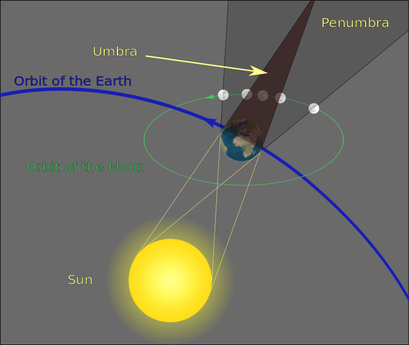
Aristotle noticed that during lunar eclipses (when the Earth’s orbit places it directly between the Sun and the Moon, creating a shadow in the process), the shadow on the Moon’s surface is round.
This shadow is the Earth’s, and it’s a great clue on the spherical shape of the Earth.
This shadow is the Earth’s, and it’s a great clue on the spherical shape of the Earth.
Flat Moon
If the moon were a 'flat disc' then only observers directly underneath it would see it as circular, observers further away would increasingly see an oval. This doesn't happen - again, because the Moon is 238,900 miles away, far away observers see only a few arcminutes of difference (almost unmeasurable even with telescopes).
Any good telescope shows you it is very clearly a spheroid:
If the moon were a 'flat disc' then only observers directly underneath it would see it as circular, observers further away would increasingly see an oval. This doesn't happen - again, because the Moon is 238,900 miles away, far away observers see only a few arcminutes of difference (almost unmeasurable even with telescopes).
Any good telescope shows you it is very clearly a spheroid:
We all see the same side of the moon.
You cannot cry NASA conspiracy or CGI. We can all see it with our own eyeballs.
Here is the silly flat earth model of the moon with it above the flat earth going in its magic little circles.
Now if we all see the same face of the moon, HOW IS THIS POSSIBLE on a flat earth??
It is not possible. NO! Why? Because that is not how objects work.
People on the opposite sides of an object cannot see the same side!!
A spherical moon over a flat earth is not consistent with reality ... AT ALL!!
So it is two dimensional with the same face on both sides. Then anyone but people directly perpendicular would see a different shape. So No.
Is it pointing down like a spotlight. No, because then it would change shape as it is moving around and only appear circular overhead.
Is there any way this can work on a flat earth...NO! There is not?
So how do people all see the same face of the moon? Because the earth is a sphere and the moon goes around the earth. It is tidally locked with the earth with only one face always pointing towards the earth. That is why everyone sees the same face of the moon. And that is the ONLY WAY!!
And guess what, the direction the moon is pointing even correlates with the observers latitude! See below, this is incredibly nuanced and CAN NOT be explained on a FLAT earth. Heck not even seeing the same face of the moon can!!!
You cannot cry NASA conspiracy or CGI. We can all see it with our own eyeballs.
Here is the silly flat earth model of the moon with it above the flat earth going in its magic little circles.
Now if we all see the same face of the moon, HOW IS THIS POSSIBLE on a flat earth??
It is not possible. NO! Why? Because that is not how objects work.
People on the opposite sides of an object cannot see the same side!!
A spherical moon over a flat earth is not consistent with reality ... AT ALL!!
So it is two dimensional with the same face on both sides. Then anyone but people directly perpendicular would see a different shape. So No.
Is it pointing down like a spotlight. No, because then it would change shape as it is moving around and only appear circular overhead.
Is there any way this can work on a flat earth...NO! There is not?
So how do people all see the same face of the moon? Because the earth is a sphere and the moon goes around the earth. It is tidally locked with the earth with only one face always pointing towards the earth. That is why everyone sees the same face of the moon. And that is the ONLY WAY!!
And guess what, the direction the moon is pointing even correlates with the observers latitude! See below, this is incredibly nuanced and CAN NOT be explained on a FLAT earth. Heck not even seeing the same face of the moon can!!!
Furthermore, distant observers see the parallax shift expected of a Moon 238,900 miles away.
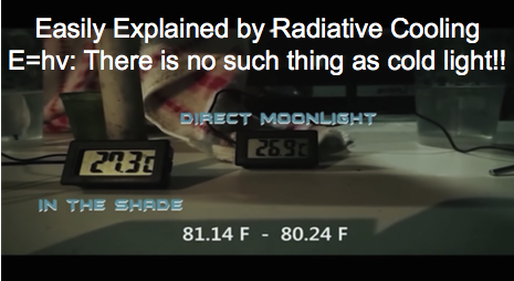
Cold Moonlight is IMPOSSIBLE!
That would require light to have way of removing energy from the area around it.
E=hv dictates that all light has positive energy (it cannot even be zero let alone negative).
Cold moonlight is a DIRECT violation of the 2nd law of thermodynamics and contradicts literally both thermodynamics, electrodynamics and quantum mechanics all in one fell swoop.
Cold light cannot exist without some unverse breaking special physics we don't know about.
So what is going on? Why does it appear that the moon shade is warmer than the moonlight. It is called radiative cooling.
During the day, earth receives 430 quintillion Joules of energy per hour. A lot of the energy gets absorbed by the ground and water and warms them up. You know when you step on the sand on a really hot day that is the energy from the sun being absorbed by the grains of sand.
But after the sun sets, on a clear night, that side of the earth not longer gets energy from the sun so it radiates it back into space and whatever object absorbs the energy cools down. However if there is something that blocks that energy from radiating back into space like clouds OR being in the shade, it isn't able to release that energy and cool down as quickly as something with an open sky above it.
-----
Moonlight is cold is radiative cooling. The shade has a barrier that blocks the heat from escaping therefore it will be warmer and has nothing to do with the moonlight.
That would require light to have way of removing energy from the area around it.
E=hv dictates that all light has positive energy (it cannot even be zero let alone negative).
Cold moonlight is a DIRECT violation of the 2nd law of thermodynamics and contradicts literally both thermodynamics, electrodynamics and quantum mechanics all in one fell swoop.
Cold light cannot exist without some unverse breaking special physics we don't know about.
So what is going on? Why does it appear that the moon shade is warmer than the moonlight. It is called radiative cooling.
During the day, earth receives 430 quintillion Joules of energy per hour. A lot of the energy gets absorbed by the ground and water and warms them up. You know when you step on the sand on a really hot day that is the energy from the sun being absorbed by the grains of sand.
But after the sun sets, on a clear night, that side of the earth not longer gets energy from the sun so it radiates it back into space and whatever object absorbs the energy cools down. However if there is something that blocks that energy from radiating back into space like clouds OR being in the shade, it isn't able to release that energy and cool down as quickly as something with an open sky above it.
-----
Moonlight is cold is radiative cooling. The shade has a barrier that blocks the heat from escaping therefore it will be warmer and has nothing to do with the moonlight.
Tides are perfectly correlated with sun and moon position. We can predict tides perfectly. This is only possible with gravity. Gravity is anti-flat earth.
The effect of this tide varies with the topography of the water/land interface. Lakes 5cm
The effect of this tide varies with the topography of the water/land interface. Lakes 5cm
Eclipse Shadows
Now that humanity knows quite positively that the Moon is not a piece of cheese or a playful god, the phenomena that accompany it (from its monthly cycles to lunar eclipses) are well-explained. It was quite a mystery to the ancient Greeks, though, and in their quest for knowledge, they came up with a few insightful observations that helped humanity figure out the shape of our planet.
Aristotle (who made quite a lot of observations about the spherical nature of the Earth) noticed that during lunar eclipses (when the Earth’s orbit places it directly between the Sun and the Moon, creating a shadow in the process), the shadow on the Moon’s surface is round. This shadow is the planet’s, and it’s a great clue about the spherical shape of the Earth.
Lunar eclipse
A sequential view of the lunar eclipse that occurred on April 15, 2014. You can see Earth’s shadow crossing the face of the Moon, and the shadow’s shape is curved because Earth is spherical.
Since the earth is rotating (see the “Foucault Pendulum” experiment for a definite proof, if you are doubtful), the consistent oval-shadow it produces in each and every lunar eclipse proves that the earth is not only round but spherical—absolutely, utterly, beyond a shadow of a doubt not flat.
Now that humanity knows quite positively that the Moon is not a piece of cheese or a playful god, the phenomena that accompany it (from its monthly cycles to lunar eclipses) are well-explained. It was quite a mystery to the ancient Greeks, though, and in their quest for knowledge, they came up with a few insightful observations that helped humanity figure out the shape of our planet.
Aristotle (who made quite a lot of observations about the spherical nature of the Earth) noticed that during lunar eclipses (when the Earth’s orbit places it directly between the Sun and the Moon, creating a shadow in the process), the shadow on the Moon’s surface is round. This shadow is the planet’s, and it’s a great clue about the spherical shape of the Earth.
Lunar eclipse
A sequential view of the lunar eclipse that occurred on April 15, 2014. You can see Earth’s shadow crossing the face of the Moon, and the shadow’s shape is curved because Earth is spherical.
Since the earth is rotating (see the “Foucault Pendulum” experiment for a definite proof, if you are doubtful), the consistent oval-shadow it produces in each and every lunar eclipse proves that the earth is not only round but spherical—absolutely, utterly, beyond a shadow of a doubt not flat.
Eclipses
Predictive power is just one prong that supports a Scientific Theory. The Saros Cycle of eclipses is purely empirical - it has no explanatory power and no accounting for its own inaccuracies which is why it was replaced with the more accurate Heliocentric model.
The Heliocentric model allows to the second prediction of eclipses and exact modeling of every aspect we observe in the Solar System.
Antikythera mechanism (AN-tih-kih-THEER-ə)
*Lyapunov Exponent*
On predicting planetary orbits
Lee-op-uh-noff Exponent and Time - Horizon of predictability
A number of studies have shown that the inner solar system is chaotic, with a Lyapunov time scale of about 5 million years. This 5 million year time scale means that while one can somewhat reasonably create a planetary ephemeris (a time-based catalog of where the planets were / will be) that spans from 10 million years into the past to 10 million years into the future, going beyond that by much is essentially impossible. At a hundred million years, the position of a planet on its orbit becomes complete garbage, meaning that the uncertainties in the planetary positions exceed the orbital radii.
The Sun, Jupiter, and Venus have marked effects on the long-term behavior of the Moon's orbit. Even more importantly, however, the Moon is receding from the Earth due to tidal interactions, and this rate is not constant. The current recession rate is about twice the average rate over the last several hundred million years.
Predictive power is just one prong that supports a Scientific Theory. The Saros Cycle of eclipses is purely empirical - it has no explanatory power and no accounting for its own inaccuracies which is why it was replaced with the more accurate Heliocentric model.
The Heliocentric model allows to the second prediction of eclipses and exact modeling of every aspect we observe in the Solar System.
Antikythera mechanism (AN-tih-kih-THEER-ə)
*Lyapunov Exponent*
On predicting planetary orbits
Lee-op-uh-noff Exponent and Time - Horizon of predictability
A number of studies have shown that the inner solar system is chaotic, with a Lyapunov time scale of about 5 million years. This 5 million year time scale means that while one can somewhat reasonably create a planetary ephemeris (a time-based catalog of where the planets were / will be) that spans from 10 million years into the past to 10 million years into the future, going beyond that by much is essentially impossible. At a hundred million years, the position of a planet on its orbit becomes complete garbage, meaning that the uncertainties in the planetary positions exceed the orbital radii.
The Sun, Jupiter, and Venus have marked effects on the long-term behavior of the Moon's orbit. Even more importantly, however, the Moon is receding from the Earth due to tidal interactions, and this rate is not constant. The current recession rate is about twice the average rate over the last several hundred million years.
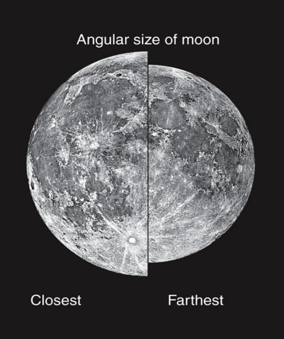
Moon same side, same angle, cold light, plasma and
All the problems with the flat earth moon.
We can predict eclipses to the minute and square mile.
Nodal points and eclipses... Predictions? Any predictions by flat earth
At all?
Moonlight is cold is radiative cooling. The shade has a barrier that blocks the heat from escaping therefore it will be warmer and has nothing to do with the moonlight.
This would violate the second law of thermodynamics.
All the problems with the flat earth moon.
We can predict eclipses to the minute and square mile.
Nodal points and eclipses... Predictions? Any predictions by flat earth
At all?
Moonlight is cold is radiative cooling. The shade has a barrier that blocks the heat from escaping therefore it will be warmer and has nothing to do with the moonlight.
This would violate the second law of thermodynamics.
Selenelion
This is called a Selenelion (see Dec 10, 2010 Selenelion). Lunar eclipses are always at the Full Moon, which rises at sunset and there could be an eclipse at this time because it is well established that when on the horizon, the sun and moon are both about 1/2° (34 arcminutes) below the actual horizon and refraction is bending the light slightly because the lower atmosphere is more dense than the upper atmosphere.
This is called a Selenelion (see Dec 10, 2010 Selenelion). Lunar eclipses are always at the Full Moon, which rises at sunset and there could be an eclipse at this time because it is well established that when on the horizon, the sun and moon are both about 1/2° (34 arcminutes) below the actual horizon and refraction is bending the light slightly because the lower atmosphere is more dense than the upper atmosphere.
Measuring the Distance to the MoonThe first distance to be measured with any accuracy was that of the Moon. In the middle of the 2nd century BCE, Greek astronomer Hipparchus pioneered the use of a method known as parallax. The idea of parallax is simple: when objects are observed from two different angles, closer objects appear to shift more than do farther ones. You can demonstrate this easily for yourself by holding a finger at arm's length and closing one eye and then the other. Notice how your finger moves more than things in the background? That's parallax! By observing the Moon from two cities a known distance apart, Hipparchus used a little geometry to compute its distance to within 7% of today's modern value – not bad!
Bounced Microwaves off the moon and measured it to be 238,000 miles.
Distance and Angular Size
We Know Distance and Know its Size
Mapping of the moon
We Know Distance and Know its Size
Mapping of the moon

